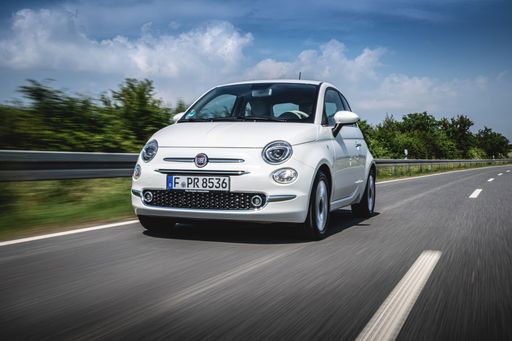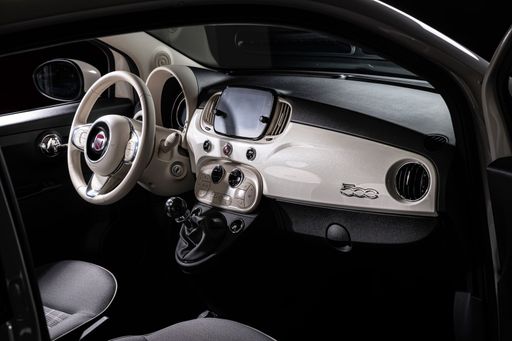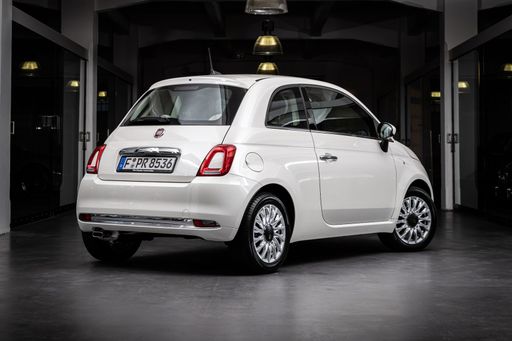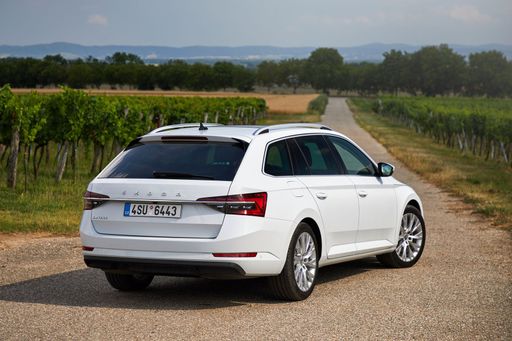Fiat 500 vs Skoda Superb Combi – Differences & prices compared
Everyday use, family trips or long-distance drives – here’s where the differences show.
Discover whether Fiat 500 or Skoda Superb Combi fits your lifestyle better.
Costs and Efficiency: Looking at overall running costs, both models reveal some interesting differences in everyday economy.
Fiat 500 has a convincingly advantage in terms of price – it starts at 21400 £, while the Skoda Superb Combi costs 35200 £. That’s a price difference of around 13808 £.
As for range, the Fiat 500 performs significantly better – achieving up to 331 km, about 197 km more than the Skoda Superb Combi.
Engine and Performance: Under the bonnet, it becomes clear which model is tuned for sportiness and which one takes the lead when you hit the accelerator.
When it comes to engine power, the Skoda Superb Combi has a decisively edge – offering 265 HP compared to 118 HP. That’s roughly 147 HP more horsepower.
In acceleration from 0 to 100 km/h, the Skoda Superb Combi is convincingly quicker – completing the sprint in 5.70 s, while the Fiat 500 takes 9 s. That’s about 3.30 s faster.
In terms of top speed, the Skoda Superb Combi performs distinct better – reaching 250 km/h, while the Fiat 500 tops out at 150 km/h. The difference is around 100 km/h.
There’s also a difference in torque: Skoda Superb Combi pulls convincingly stronger with 400 Nm compared to 220 Nm. That’s about 180 Nm difference.
Space and Everyday Use: Beyond pure performance, interior space and usability matter most in daily life. This is where you see which car is more practical and versatile.
Seats: Skoda Superb Combi offers to a small extent more seating capacity – 5 vs 4.
In curb weight, Fiat 500 is to a small extent lighter – 1330 kg compared to 1575 kg. The difference is around 245 kg.
In terms of boot space, the Skoda Superb Combi offers significantly more room – 690 L compared to 185 L. That’s a difference of about 505 L.
In maximum load capacity, the Skoda Superb Combi performs clearly better – up to 1920 L, which is about 1370 L more than the Fiat 500.
When it comes to payload, Skoda Superb Combi clearly takes the win – 584 kg compared to 305 kg. That’s a difference of about 279 kg.
Who wins the race?
The Skoda Superb Combi proves to be is largely superior and therefore becomes our DriveDuel Champion!
Skoda Superb Combi is the better all-rounder in this comparison.

Skoda Superb Combi
Fiat 500
The Fiat 500 is a compact and stylish city car that has captured the hearts of urban drivers with its charming retro design. Its nimble handling and efficient engine make navigating tight city streets a breeze, while its cosy interior offers a surprising amount of comfort and modern technology. The car's iconic silhouette and vibrant colour options ensure it stands out, offering a unique blend of timeless appeal and contemporary flair.
details @ media.stellantis.com
@ media.stellantis.com
 @ media.stellantis.com
@ media.stellantis.com
 @ media.stellantis.com
@ media.stellantis.com
Skoda Superb Combi
The Škoda Superb Combi combines practicality and elegance, making it a popular choice for families and professionals alike. Its spacious interior offers exceptional comfort and ample storage, suitable for long journeys and everyday errands. Additionally, the refined design and advanced technology features ensure a sophisticated driving experience.
details @ Skoda Presse Deutschland
@ Skoda Presse Deutschland
 @ Skoda Presse Deutschland
@ Skoda Presse Deutschland

|

|
|
|
|
Costs and Consumption |
|
|---|---|
|
Price
21400 - 30800 £
|
Price
35200 - 51000 £
|
|
Consumption L/100km
-
|
Consumption L/100km
0.4 - 7.8 L
|
|
Consumption kWh/100km
13 - 14.7 kWh
|
Consumption kWh/100km
-
|
|
Electric Range
190 - 331 km
|
Electric Range
124 - 134 km
|
|
Battery Capacity
21.3 - 37.3 kWh
|
Battery Capacity
19.70 kWh
|
|
co2
0 g/km
|
co2
8 - 178 g/km
|
|
Fuel tank capacity
-
|
Fuel tank capacity
45 - 66 L
|
Dimensions and Body |
|
|---|---|
|
Body Type
Hatchback
|
Body Type
Estate
|
|
Seats
4
|
Seats
5
|
|
Doors
3 - 4
|
Doors
5
|
|
Curb weight
1330 - 1475 kg
|
Curb weight
1575 - 1853 kg
|
|
Trunk capacity
185 L
|
Trunk capacity
510 - 690 L
|
|
Length
3632 mm
|
Length
4902 mm
|
|
Width
1683 mm
|
Width
1849 mm
|
|
Height
1527 mm
|
Height
1482 mm
|
|
Max trunk capacity
550 L
|
Max trunk capacity
1770 - 1920 L
|
|
Payload
250 - 305 kg
|
Payload
497 - 584 kg
|
Engine and Performance |
|
|---|---|
|
Engine Type
Electric
|
Engine Type
Plugin Hybrid, Petrol, Petrol MHEV, Diesel
|
|
Transmission
Automatic
|
Transmission
Automatic
|
|
Transmission Detail
Reduction Gearbox
|
Transmission Detail
Dual-Clutch Automatic
|
|
Drive Type
Front-Wheel Drive
|
Drive Type
Front-Wheel Drive, All-Wheel Drive
|
|
Power HP
95 - 118 HP
|
Power HP
150 - 265 HP
|
|
Acceleration 0-100km/h
9 - 9.5 s
|
Acceleration 0-100km/h
5.7 - 9.3 s
|
|
Max Speed
135 - 150 km/h
|
Max Speed
220 - 250 km/h
|
|
Torque
220 Nm
|
Torque
250 - 400 Nm
|
|
Number of Cylinders
-
|
Number of Cylinders
4
|
|
Power kW
70 - 87 kW
|
Power kW
110 - 195 kW
|
|
Engine capacity
-
|
Engine capacity
1498 - 1984 cm3
|
General |
|
|---|---|
|
Model Year
2023 - 2025
|
Model Year
2024 - 2025
|
|
CO2 Efficiency Class
A
|
CO2 Efficiency Class
B, E, F, D, G
|
|
Brand
Fiat
|
Brand
Skoda
|
What drivetrain options does the Fiat 500 have?
The Fiat 500 is offered with Front-Wheel Drive.
The prices and data displayed are estimates based on German list prices and may vary by country. This information is not legally binding.
